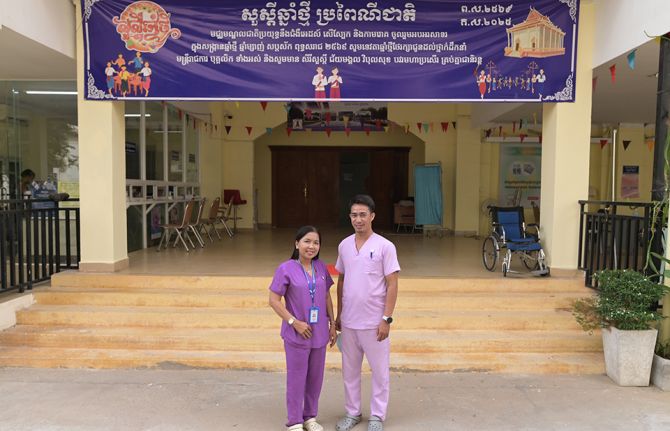
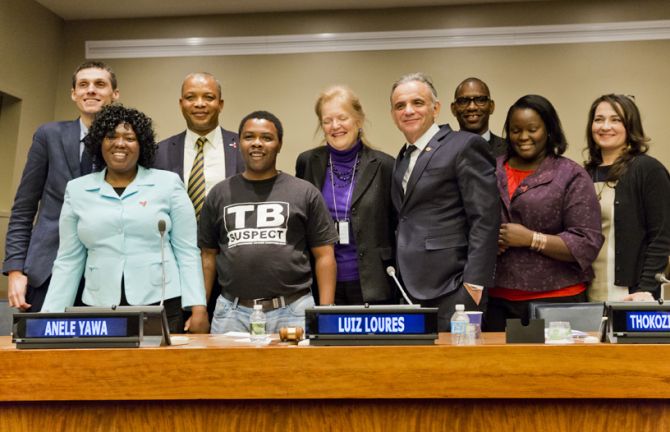
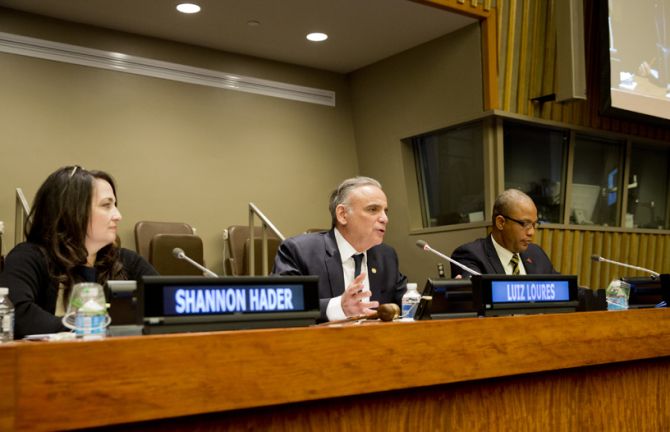
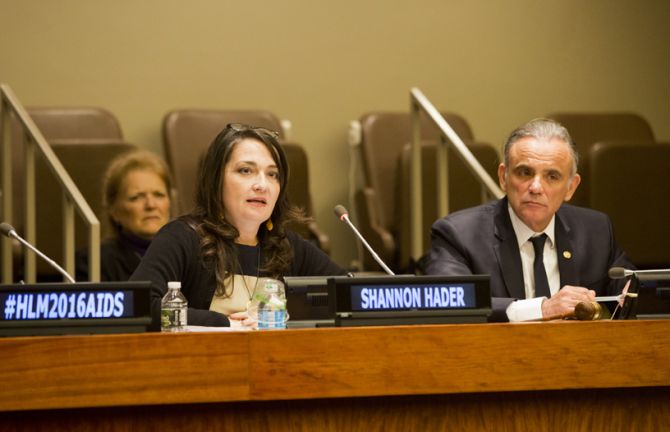
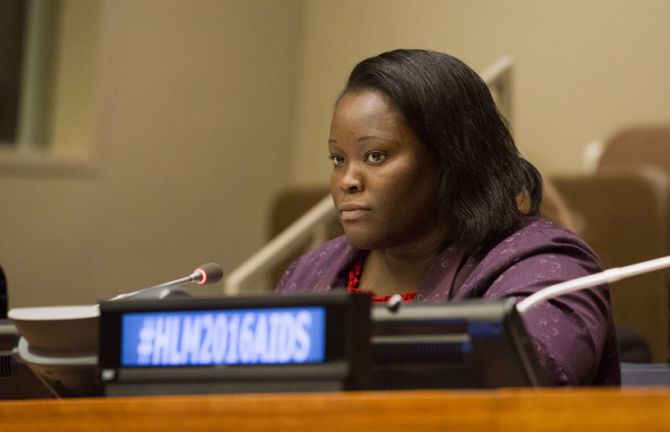

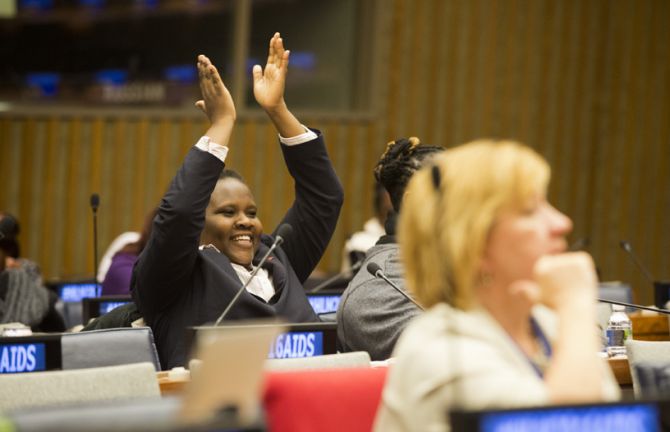
Update
Uniting communities to end the epidemics of AIDS and tuberculosis
07 April 2016
07 April 2016 07 April 2016UNAIDS and the Stop TB Partnership have hosted an interactive discussion in New York, United States of America, with representatives of civil society organizations and other stakeholders involved in the response to HIV and tuberculosis (TB). The discussion took place during the Informal Interactive Civil Society Hearing held by the President of the United Nations General Assembly in preparation for the United Nations General Assembly High-Level Meeting on Ending Aids, which will take place in New York from 8 to 10 June.
During the discussion, the participants described the challenges posed by the epidemics and explored ideas to better integrate the responses. UNAIDS and the Stop TB Partnership have both set ambitious five-year targets to respond to the epidemics and to set the world on course to end them as part of the Sustainable Development Goals.
The UNAIDS 2016–2021 Strategy has established a set of three people-centred goals and 10 measurable targets that must be met by 2020 to end the AIDS epidemic by 2030, including achieving the 90–90–90 treatment target for 2020, whereby 90% of people living with HIV know their HIV status, 90% of people who know their HIV-positive status are accessing antiretroviral treatment and 90% of people on treatment have suppressed viral loads. Other targets include reducing new HIV infections to fewer than 500 000 per year by 2020 and achieving zero HIV-related discrimination.
The Global Plan to End TB is the Stop TB Partnership’s five-year plan to accelerate the response to TB, and includes a projected investment scale-up from 2016 to 2020 to reach a 90–(90)–90 target. This includes reaching at least 90% of all people diagnosed with TB and enabling them to have access to appropriate therapy as required, reaching at least 90% of key populations living with tuberculosis and achieving 90% treatment success for all people diagnosed with tuberculosis.
Prevention of HIV and tuberculosis will also play a key part in ending both epidemics.
Tuberculosis is a major cause of mortality among people living with HIV and is currently responsible for one in three AIDS-related deaths.
Quotes
“There is no end to AIDS if we don’t solve the challenge of coinfection with tuberculosis. There is no option here for a silo approach.”
“We are standing at a global crossroads for HIV and tuberculosis. We know we will never end tuberculosis by 2030 unless we end AIDS by 2030. Likewise, we have no chance to end AIDS by 2030 if we don’t drastically change our response to tuberculosis.”
“I am from Ukraine, which has the fifth highest burden of multidrug-resistant tuberculosis in the world. The cause of death for 60% of HIV-positive people in Ukraine is tuberculosis. Some of them were my friends.”
“The fact that tuberculosis claimed three lives in my family makes me angry—my father, my mother and my brother. When there is a cure and when it is preventable, people should not be dying. Our approach to this disease is wrong.”
“Tuberculosis and HIV are like a brother and sister. We cannot separate them.”

